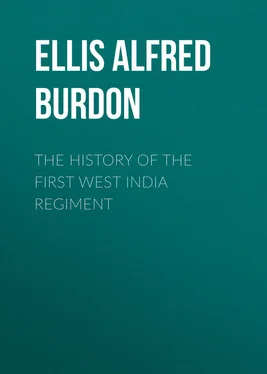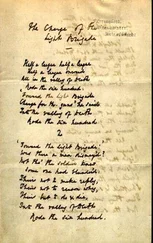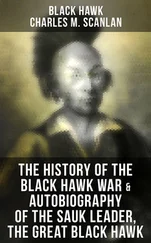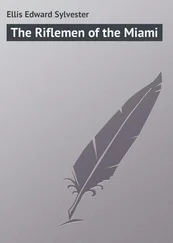Alfred Ellis - The History of the First West India Regiment
Здесь есть возможность читать онлайн «Alfred Ellis - The History of the First West India Regiment» — ознакомительный отрывок электронной книги совершенно бесплатно, а после прочтения отрывка купить полную версию. В некоторых случаях можно слушать аудио, скачать через торрент в формате fb2 и присутствует краткое содержание. Жанр: foreign_antique, foreign_prose, на английском языке. Описание произведения, (предисловие) а так же отзывы посетителей доступны на портале библиотеки ЛибКат.
- Название:The History of the First West India Regiment
- Автор:
- Жанр:
- Год:неизвестен
- ISBN:нет данных
- Рейтинг книги:3 / 5. Голосов: 1
-
Избранное:Добавить в избранное
- Отзывы:
-
Ваша оценка:
- 60
- 1
- 2
- 3
- 4
- 5
The History of the First West India Regiment: краткое содержание, описание и аннотация
Предлагаем к чтению аннотацию, описание, краткое содержание или предисловие (зависит от того, что написал сам автор книги «The History of the First West India Regiment»). Если вы не нашли необходимую информацию о книге — напишите в комментариях, мы постараемся отыскать её.
The History of the First West India Regiment — читать онлайн ознакомительный отрывок
Ниже представлен текст книги, разбитый по страницам. Система сохранения места последней прочитанной страницы, позволяет с удобством читать онлайн бесплатно книгу «The History of the First West India Regiment», без необходимости каждый раз заново искать на чём Вы остановились. Поставьте закладку, и сможете в любой момент перейти на страницу, на которой закончили чтение.
Интервал:
Закладка:
After their repulse from the Ebenezer Redoubt, the enemy retired, and, a few days afterwards, the siege was raised, the Americans crossing the Savannah at Zubly's Ferry and taking up a position in South Carolina, while the French embarked in their fleet and sailed away. During the assault the French lost 700 and the Americans 240 killed. The British loss was 55, four of whom belonged to the South Carolina Regiment, who were killed in the redoubt, where also Captain Henry, of that corps, was wounded.
According to the "Journal of the Siege of Savannah," p. 39, the garrison of the redoubt in the Ebenezer Road was as follows:
28 Dismounted Dragoons.
28 Battalion men of the 60th Regiment.
54 South Carolina Regiment.
–
110
In the same work is the following: "Two rebel standards were once fixed on the redoubt in the Ebenezer Road; one of them was carried off again, and the other, which belonged to the 2nd Carolina Regiment, was taken. After the retreat of the enemy from our right, 270 men, chiefly French, were found dead; upwards of 80 of whom lay in the ditch and on the parapet of the redoubt, and 93 were within our abattis."
The strength of the South Carolina Regiment at the termination of the siege was: 1 colonel (Colonel Innes), 1 major, 4 captains, 7 lieutenants, 3 ensigns, 15 sergeants, 7 drummers, and 216 rank and file.
Nothing of note took place in Georgia and South Carolina till January, 1780, when Sir Henry Clinton arrived in the Savannah River with a force destined for the reduction of Charlestown. He had sailed from New York on the 26th of December, 1779, and, having experienced bad weather, put into the Savannah to repair damages. Sir H. Clinton selected a portion of General Prevost's force at Savannah to take part in the coming operations, and among the corps so selected was the South Carolina Regiment, which is shown in the return of troops at the capture of Charlestown as "joined from Savannah."
On the 10th of February, the armament sailed to North Edisto, where the troops disembarked, taking possession of the island of St. John next day without opposition. On the 29th of March, the army reached Ashley River and crossed it ten miles above Charlestown; then, the artillery and stores having been brought over, Sir H. Clinton marched down Charlestown Neck, and, on the night of the 1st of April, broke ground at 800 yards from the American works. The garrison of the city consisted of 2000 regular troops, 1000 North Carolina Militia, and the male inhabitants of the place.
On the 9th of April, the first parallel was finished, and the batteries opened fire; and Charlestown finally capitulated, after an uneventful siege, on the 12th of May. In the "Return of the killed and wounded" during the siege, the South Carolina Regiment is shown as having had three rank and file wounded.
Sir H. Clinton sailed from Charlestown on the 5th of June, leaving Lord Cornwallis in command. The latter meditated an expedition into North Carolina, and, for the preservation of South Carolina during his absence with the main body of the troops, he established a chain of posts along the frontier. One of these posts was at Ninety-six, and for its defence was detailed the South Carolina Regiment, under Colonel Innes, with Allen's corps, "the 16th and three other companies of Light Infantry." 7 7 "The Campaigns of 1780 and 1781, in the Southern Provinces of North America," by Lieutenant-Colonel Tarleton, London, 1787.
Lieutenant-Colonel Balfour was then in command of the post, but was soon after relieved by Lieutenant-Colonel Cruger.
The garrison of Ninety-six remained undisturbed till September, 1780, when, Lord Cornwallis having moved into North Carolina and occupied Charlotte, Georgia was almost denuded of troops; and an American leader, Colonel Clarke, took advantage of this to attack the British post at Augusta. Lieutenant-Colonel Brown, who commanded there with 150 men, finding the town untenable, retired towards an eminence on the banks of the Savannah, named Garden Hill, and sent intelligence of his situation to Ninety-six. Lieutenant-Colonel Cruger, with the 16th and the South Carolina Regiment, at once marched to his relief. Colonel Clarke, who had captured the British guns and was besieging the garrison of Garden Hill, upon being informed of Cruger's approach raised the siege, and, abandoning the guns which he had taken, retreated so hurriedly that, though pursued for some distance, he effected his escape.
In the spring of 1781, Lord Cornwallis had again invaded North Carolina, and, having defeated the American general, Greene, at Guildford Court House, had continued his march towards Virginia, expecting the enemy to make every effort to prevent the army entering that state. General Greene, however, allowed Lord Cornwallis to pass on, and then, having assembled a considerable body of troops, made a sudden descent upon the British posts in South Carolina, where Lord Rawdon had been left in command. These posts were in a line from Charlestown by the way of Camden and Ninety-six, to Augusta in Georgia. Camden was the most important, and there Lord Rawdon had taken post with 900 men.
On the 20th of April, 1781, General Greene appeared before Camden, which was a village situated on a plain, covered on the south by the Wateree, a river which higher up is called the Catawba; and below, after its confluence with the Congaree from the south, assumes the name of the Santee. On the east of it flowed Pinetree Creek; on the northern and western sides it was defended by a strong chain of redoubts, six in number, extending from the river to the creek. Lord Rawdon's force was so small that the approach of Greene to Camden necessitated the abandonment of the ferry on the Wateree, "although the South Carolina Regiment was on its way to join him from Ninety-six, and that was its direct course; he had, however, taken his measures so well as to secure the passage of that regiment upon its arrival three days after." 8 8 Tarleton, p. 461.
General Greene, whose force amounted to 1200 men, determined to await reinforcements before attacking, and on the 24th of April he retired to Hobkerk's Hill, an eminence about a mile north of Camden, on the road to the Waxhaws. Here Lord Rawdon resolved to attack him, and on the morning of the 25th, with 900 men, he marched from Camden, and, by making a circuit, and keeping close to the edge of the swamp, under cover of the woods, he gained the left flank of the Americans, where the hill was most accessible, undiscovered.
The alarm was given, while the Americans were at breakfast, by the firing of the outposts, and at this critical moment a reinforcement of American militia arrived. So confident was General Greene of success that he ordered Lieutenant-Colonel Washington, with his cavalry, to turn the right flank of the British and to charge them in the rear, while bodies of infantry were to assail them in front and on both flanks.
The American advanced parties were driven in by the British after a sharp skirmish, and Lord Rawdon advanced steadily to attack the main body of the enemy. The 63rd Regiment, with the volunteers of Ireland, formed his right; the King's American Regiment, with Robertson's corps, composed his left; the New York volunteers were in the centre. The South Carolina Regiment and the cavalry were in the rear and formed a reserve. 9 9 "Martial Register," vol. iii. p. 110.
Such was the impetuosity of the British that, in the face of a destructive discharge of grape, they gained the summit of the hill and pierced the American centre. The militia fell into confusion, their officers were unable to rally them, and General Greene ordered a retreat. The pursuit was continued for nearly three miles. The Americans halted for the night at Saunders' Creek, about four miles from Hobkerk's Hill, and next day proceeded to Rugeley Mills, about twelve miles from Camden. After the engagement the British returned to Camden. The American loss was 300; the British lost 258 out of about 900 who were on the field.
Читать дальшеИнтервал:
Закладка:
Похожие книги на «The History of the First West India Regiment»
Представляем Вашему вниманию похожие книги на «The History of the First West India Regiment» списком для выбора. Мы отобрали схожую по названию и смыслу литературу в надежде предоставить читателям больше вариантов отыскать новые, интересные, ещё непрочитанные произведения.
Обсуждение, отзывы о книге «The History of the First West India Regiment» и просто собственные мнения читателей. Оставьте ваши комментарии, напишите, что Вы думаете о произведении, его смысле или главных героях. Укажите что конкретно понравилось, а что нет, и почему Вы так считаете.












